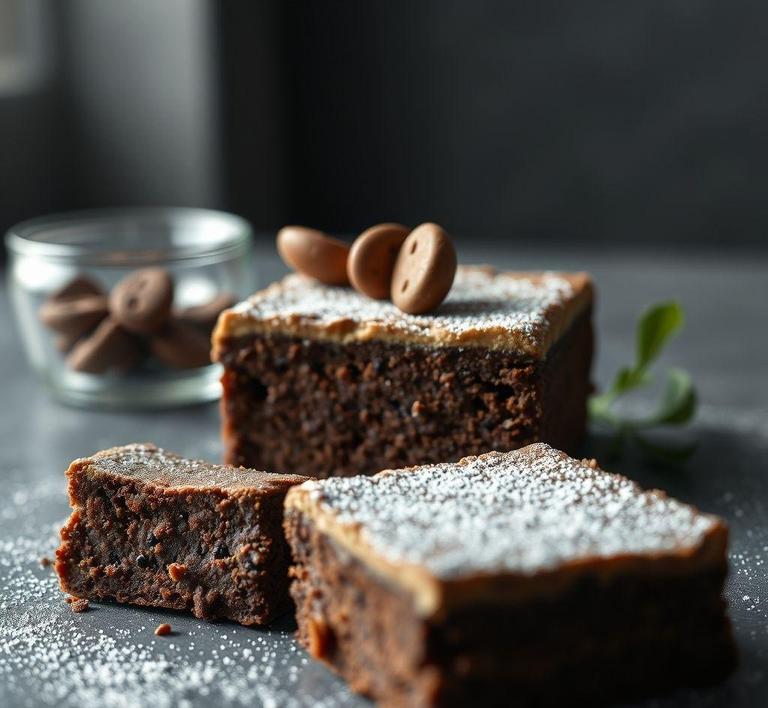If you’ve ever found yourself with a batch of brownies that you can’t quite finish in one sitting (because, who can?), you might wonder: Can I refreeze brownies? The answer is yes, you absolutely can! Refreezing brownies is a great way to preserve their moist, fudgy texture and keep them fresh for longer. Whether you’ve got leftover brownies from a party or just want to store a batch for later, this guide will walk you through the best way to refreeze your brownies, ensuring they retain their deliciousness when you’re ready to enjoy them again. Keep reading for all the tips and tricks you need!
Can You Refreeze Brownie?

The short answer: Yes, you can refreeze brownies-but with caveats.
Brownies, those dense, fudgy, and decadently rich squares of baked goodness, are fairly forgiving when it comes to freezing. Whether you’ve thawed a batch for a last-minute gathering or changed your mind about serving them, you might find yourself wondering if popping them back into the freezer is safe and sensible.
The good news is that brownies do not pose significant food safety risks when refrozen, provided they’ve been thawed properly (i.e., in the refrigerator and not left at room temperature for several hours). Unlike meats or dairy-heavy dishes that can become breeding grounds for bacteria once thawed, brownies have relatively low moisture content and high sugar content-both of which act as natural preservatives. That said, it’s not just about food safety. Texture and flavor are the key players when it comes to assessing whether refreezing is a smart choice.
How To Refreeze Brownie?
If you’ve decided to refreeze your brownies, doing it properly will preserve as much of their original texture and taste as possible. Follow these steps for best results:
-
Cool Completely (If Freshly Baked or Rewarmed):
Before refreezing, ensure your brownies are at room temperature. If they’ve been warmed or reheated, allow them to cool completely. Trapping heat inside packaging will lead to condensation, which can create ice crystals and degrade texture.
-
Portion Before Freezing:
Cut the brownies into individual squares before freezing. This allows for easier retrieval later without needing to thaw the entire batch.
-
Wrap Well:
Wrap each brownie square tightly in plastic wrap or aluminum foil. For added protection against freezer burn, place the wrapped brownies in a zip-top freezer bag or airtight container.
-
Label & Date:
Mark the date of refreezing. While brownies can technically last up to three months in the freezer, flavor and texture are best preserved when consumed within one month of refreezing.
-
Thaw Gently:
When you’re ready to enjoy them again, allow the brownies to thaw in the refrigerator for several hours or overnight. A slow thaw minimizes texture changes and moisture accumulation.
Quality Impact
This is where things get a little less sweet. While you can refreeze brownies, it’s important to acknowledge that each freeze-thaw cycle subtly alters their quality. The changes might not be drastic after the first refreeze, but they become more pronounced with each repetition.
Here’s what might happen:
-
Texture Degradation:
Brownies, especially those of the fudgy variety, can become denser or slightly grainy after being frozen and thawed more than once. Moisture migration during thawing can lead to a dry or crumbly crumb structure, especially around the edges.
-
Flavor Dulling:
Freezing doesn’t usually diminish flavor significantly, but refreezing can sometimes flatten the nuanced chocolate notes. Air exposure-even minimal-can oxidize fats in the brownies, especially if they’re made with butter or oils.
-
Topping Troubles:
If your brownies are frosted, topped with ganache, or include add-ins like cream cheese swirls, the texture of those elements is even more prone to breaking down. Cream-based toppings might separate or become icy.
-
Freezer Burn Risk:
Each time you remove brownies from the freezer, moisture is lost or relocated, making them more vulnerable to freezer burn on a second freeze-especially if not wrapped well.
Refreezing brownies is not only safe but often a practical choice for busy bakers and sweet-toothed snackers alike. However, it’s not without its drawbacks. While one additional freeze-thaw cycle is unlikely to ruin your dessert, expect some mild trade-offs in texture and flavor, particularly in brownies with delicate toppings or fillings.
The key to maintaining the integrity of your brownies through a refreeze is careful handling: cool them completely, wrap them tightly, and minimize temperature fluctuations. If you’re particular about dessert perfection, it may be worth planning ahead and only thawing what you need.
🧁 Is It Safe To Refreeze Brownies?
The safety of refreezing brownies largely depends on how they were handled after their initial thaw. Brownies, particularly those that are homemade, are less perishable than meats or dairy products but are not immune to spoilage. Generally, it is safe to refreeze brownies if:
- They were thawed in the refrigerator and not left at room temperature for more than two hours.
- They have not developed any off smells, textures, or appearances.
- They have not been contaminated with moisture, which could lead to mold growth.
Texture and taste are the biggest concerns. Refreezing brownies can cause slight degradation in their moisture content. A once-fudgy treat might turn a bit drier and crumbly after the second freeze-thaw cycle. However, this is more of a quality issue than a safety one, assuming the above criteria are met.
🍫 Signs That Brownies Should Not Be Refrozen
Sometimes your brownies send you a clear "no" when it comes to a second stint in the freezer. Keep an eye out for these warning signs:
-
Off Smell:
A sour, fermented, or rancid odor is a clear indication that the brownies have gone bad. This can happen if dairy or eggs in the recipe begin to spoil after thawing.
-
Mold or Discoloration:
Even a small amount of mold is a deal-breaker. Mold spores can spread beneath the surface, making it unsafe to consume. Any fuzzy spots or white, green, or bluish hues mean the brownie belongs in the bin, not the freezer.
-
Change in Texture:
If your brownies feel overly slimy or soggy, especially when they weren’t like that before, it’s a sign that bacterial activity may have begun. Toss them rather than risk refreezing.
-
Room Temperature Storage Beyond Two Hours:
If brownies were left out for extended periods after thawing, bacteria can multiply rapidly. Even if they look and smell fine, they could be unsafe to eat or refreeze.
Common Refreezing Mistakes
Refreezing seems straightforward, but there are several pitfalls people often stumble into. Avoid these common errors:
-
Refreezing After Thawing on the Counter:
This is one of the most dangerous mistakes. When thawed at room temperature, the surface of the brownies can become a breeding ground for bacteria.
-
Refreezing More Than Once:
Each freeze-thaw cycle degrades texture, flavor, and increases the risk of bacterial contamination. Try to divide your batch into smaller portions before freezing so you can thaw only what you need.
-
Improper Packaging:
Freezing brownies in loosely sealed containers or flimsy bags can lead to freezer burn. This not only ruins the taste and texture but can also allow air and moisture to compromise food safety.
-
Not Labeling:
It’s easy to lose track of when you froze or thawed a food item. Always label your containers with the original freezing date and the thaw date to keep a clear timeline.
🎯 Tips And Tricks For Smart Refreezing
If you’ve determined your brownies are safe to refreeze, follow these expert techniques to preserve quality:
-
Use Airtight Wrapping:
Wrap individual brownies in plastic wrap or foil, then store them in a heavy-duty freezer bag. This dual-layer protection keeps out air and moisture.
-
Freeze Quickly:
Place freshly thawed brownies back in the freezer as soon as possible to reduce the time they’re exposed to fluctuating temperatures.
-
Portion Control:
Freeze brownies in single-serve portions. This way, you only thaw what you intend to eat-minimizing waste and reducing the chance of needing to refreeze.
-
Label Everything:
Include both the original freeze date and the date you refroze them. Most brownies maintain decent quality for up to 3 months in the freezer-refreezing reduces this window.
-
Reheat Smart:
If you’re planning to eat refrozen brownies, reheat them in the microwave for a few seconds or warm them in a low oven to help restore some of their lost moisture and texture.
Conclusion
Refreezing brownies isn’t just a matter of convenience-it requires a bit of food safety mindfulness and technique. While you can refreeze brownies safely under the right conditions, doing so repeatedly or after improper thawing can lead to textural disappointment and health risks. Keep an eye out for spoilage signs, avoid common mistakes, and employ smart freezing habits to enjoy your brownies at their best-even after a second chill.
With the right approach, your sweet treats can live to delight another day. Happy freezing (and re-freezing)!


